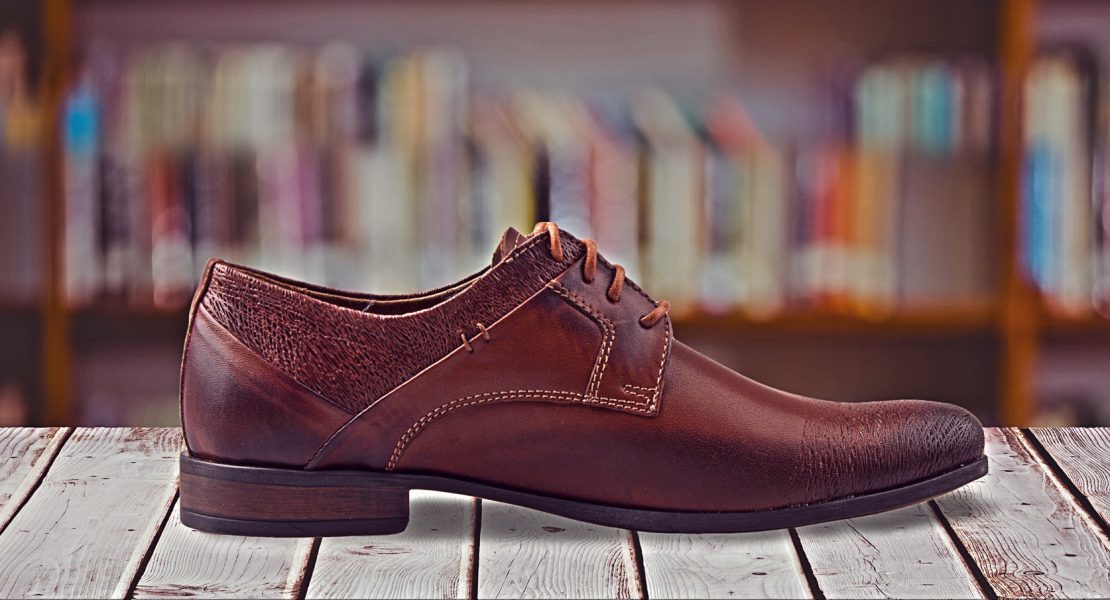It’s the dreaded question for youngsters who are set to finish secondary education — ‘Where do you see yourself in five years’ time?’
At the time, the question can seem horrifically broad and for some, difficult to answer. People tend to fall into two categories at this stage of life. The first category is made up of people who know exactly where they want to be in five years’ time. They see their 21 year-old-self as living in a nice house (rented or otherwise, we all know the score when it comes to the housing situation right now), with a dog, a significant other, and starting out in a career they’ve dreamed of since they were able to comprehend the idea of money.

This category of people are the envy of the second category of people, also known as ‘the majority of us’. For the majority of us at 16-17 years old, five years seemed like a long way away, and maybe you’re in that position right now.
While winging it and hoping for the best is not the best course of action, don’t fret if you don’t have a solid plan yet. Start by breaking the bigger problem down into smaller tasks, the first one being: what do you enjoy? Finding a career in something you enjoy might sound like simple logic, but many people forget to consider it later in life. Working in an area you enjoy not only makes your job fulfilling, but it also means that when tough days show up, you’ll have more passion to get through them!
A passion for fashion?
So, we’re at step one: figuring out what you like. Easy, right? Today, we’ll be focusing on an area that applies to so many people: fashion. Specifically, we’re looking at a career choice in the footwear industry. According to one Google study of 13-17 year olds, shoes were deemed the ‘coolest’ part of the clothes, fashion, and beauty category by nearly a third of respondents.
For those with a creative streak and a love for fashionable footwear, a career in footwear design could be right up your street. Whether you love designing sleek new heels or a robust option like desert boots, you’ll definitely be making a difference down this route.
Let’s take a look at what you’ll need to succeed.
Step one: GCSEs
You have a fair bit of wiggle-room at GCSE level, so don’t worry too much here. Feel free to take courses that interest you and that you enjoy. Of course, taking textiles courses or art might be useful for developing your creative skillset, but at this level, the main priority is getting good grades — employers are keen to see your dedication and work ethic. Be sure to nail the core subjects: English in particular often crops up as an entry requirement to BA degrees, so make sure you achieve at least a grade C (level 4) here.
Step two: A levels, BTEC, apprenticeships
You might already be at this stage, or about to head there this year. This is when you want to really be focusing on subjects that will support your career. Whether you are going for A levels or a BTEC course, you’ll obviously want to choose Arts and Design subjects. Think about picking up courses such as Design, Textiles, Design and Technology, Art, or Fashion. It would be a good idea to take Business Studies too, especially if you’re thinking of being a freelance footwear designer.
This is also the first time you can opt to leave education at 16 and head into the world. You could opt for an apprenticeship or head right into work at this point. Whatever you choose to do, you should be starting to build a portfolio. Whether you’re thinking of university, an apprenticeship, or jumping right into the world of work, you need to show off your work! Consider these tips when putting your portfolio together:
- Quality over quantity.It can be tempting to put everything you’ve ever worked on in your portfolio, but try and be selective. Don’t be afraid to remove some pieces to add new pieces down the line if they better represent your skills. Keep your portfolio to around 15-25 pieces.
- A broad display.You need to show a good level of drawing with different media, as well as different styles, such as still life, initial concept doodles, sketches, etc.
- Software skills.Include examples of your work done on Photoshop, Illustrator, and CAD, for example.
- Show your research.Whether it’s primary or secondary, show some research material. Trips to exhibitions are great for this. Get some planned in during your college years!
- A few examples of 2D and 3D design development and experimentation is crucial. Photos of finished designs and 3D work are good to include too.
- Written work.Don’t neglect to show your written skills. Journalistic writing, technical files, even lecture notes can help show this.
Have a look around at online platforms to help host your portfolio. This is a great step for a little personal branding too!
Step three: A fork in the road
With your qualifications in hand, you’ve now got to make a decision. There’s no right or wrong answer here; it’s all about what is best for you. And by ‘best for you’ we mean what is really best for you. Sure, if all your friends are going to university, it’s tempting to follow along, but unless university is appealing to you for more than that reason, take a moment to reflect on the decision. It’s okay to take a different path, and doing so won’t necessarily cost you any friendships.
What are your choices here? Well, as mentioned, getting a degree at university is one option. Alternatively, for a more hands-on approach, there’s the apprenticeship route. Finally, you could try jumping right into the working world at entry level.
Let’s breakdown each choice:
Option A: Going to university
The classic option is to head on to higher education. It’s certainly a strong choice for those seeking a career in footwear design; a university course can help teach you both design and technical skills. Many universities offer courses specifically for footwear design, such as De Montfort University, the University of Northampton, and the University of Arts London.
University of Arts London: London College of Fashion
Degree title: BA (Hons) Cordwainers Footwear: Product Design and Innovation
Minimum entry requirements*: One or a combination of the following — two A level passes at Grade C or above; pass Foundation Diploma in Art and Design; merit, pass, pass at BTEC Extended Diploma; pass at UAL Extended Diploma; Access Diploma or 64 new UCAS tariff points from the Access to HE Diploma; 64 new UCAS tariff points (equivalent of 160 old UCAS tariff points); equivalent EU or non-EUE qualification. In addition to any of these, candidates must have three GCSE passes at grade A*-C, or grade 9-4.
De Montfort University Leicester
Degree title: Footwear Design BA (Hons)
Minimum entry requirements*: A good portfolio, as well as one of the following — Art and Design Foundation; 112 points from at least 2 A levels including grade C in Art and Design; BTEC Extended Diploma DMM in an Art and Design related subject; International Baccalaureate 26+ points including Art and Design. In addition to any of these, candidates must have five GCSE passes at grade A*-C, or grade 9-4, including English Language or Literature at grade C (4) or above. Pass Access with 30 Level 3 credits at Merit in Art and Design with a grade C (4) GCSE in English is also accepted. BTEC First Diploma plus two GCSEs including grade C (4) in English is also accepted.
University of Northampton
Degree title: Footwear and Accessories BA (Hons)
Minimum entry requirements*: A typical offer is 280 UCAS tariff points. Applicants are expected to have studied an Art or Textiles related subject at A level or BTEC level 3 Diploma. Alternatively, a Foundation Diploma in Art and Design is accepted. A good portfolio is also required.
Option B: Completing an apprenticeship
University is not for everyone, and that isn’t a bad thing! Some people learn best by studying, some people learn best by doing. Skills and talents are skills and talents regardless of how you hone them! So, let’s look at the more hands-on approach with apprenticeships.
You may have started your apprenticeship at GCSE level (level 2), A level (level 3), or you might be looking to do so now instead of university (level 4 and above).
When looking for an apprenticeship, just like when scouting out a university, you need to look for a place that suits you. Make sure you research the brand, company, and employer in question before applying for your apprenticeship.
While some employers will advertise, some do not, so it’s good practice to send out speculative applications to companies you are interested in.
Option C: Heading into the working world
Of course, you might be totally done with education and just want to get right to the working part. Make sure you’ve considered all your options before doing this though — it’s worth keeping in mind that many footwear designer roles require a degree or equivalent from their applicants.
To start with, you’ll want to look for an entry level. Some good options would be to look for footwear design internships or footwear design assistant jobs. These are a great ‘foot in the door’ as it were, and can help you get that all important first rung of the ladder cleared. From here, it’s a case of working your way up. It’s especially important for people pursuing this route to maintain a strong portfolio, whether it’s a physical one or an online one. Your portfolio will be your method of standing out against candidates who may hold degrees and qualifications you don’t have.
But what are employers looking for from perspective footwear designers? With a broad range of footwear brands such as Gola, Lonsdale, and Frank Wright under its belt, leading UK footwear company Jacobson Group advises prospective employees that, “any new addition to our team needs to display energy, enthusiasm, and talent. With a strong work ethic and a passion for footwear, candidates need to show how they will make a difference to the world of footwear design.”
You need to be prepared to be persistent too. When looking for an internship, David Tourniaire-Beauciel, creative director of Robert Clergerie, recounted how it took five attempts to convince Stephan Kélain to give him a placement.
Bonus points: Shows, competitions, and standing out
If you really want your portfolio to stand out, regardless of whether you’re applying for university, an apprenticeship, attending shows and competitions is a great way not only to show your work and skills, but to network. Building relationships within the industry is crucial for creating a strong foundation for your career.
*As of January 2019, subject to change.




